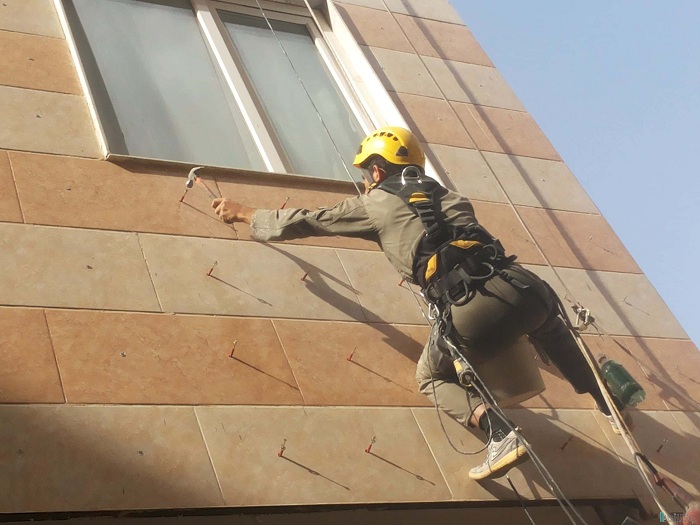Facade screws and dowels and the necessity of facade stone strength

The presence of high-rise buildings increases the need to use facades with a high degree of security and reliability.
According to the International Iranian Stone Exhibition, according to the height workers, high-rise buildings and the expansion of the use of stone for building facades and non-compliance with the principles of stone facade implementation cause serious problems and dangers for residents, pedestrians and cars. To prevent the facade stone from falling using screws and dowels, this text has been adjusted for you by the team of height workers.
Signs of falling rock facade
One of the signs of a falling stone is that the stone is tingling, which is like an alarm. Before the facade stone falls, it is necessary to measure the strength of the facade stone with screws and dowels.
Falling of small stones, one of the main signs of falling stone facade, is the falling of tool stones, which occurs in the first stage before the facade stone separates from the wall, which is a serious warning about screws and dowels.
You can perform facade screw and dowel operations without the need for scaffolding and only using rope (rappel) which has many advantages over scaffolding.
In this method, using rope, you can do all kinds of services such as facade screws and dowels, facade washing, facade sealing, nano-brick facade and facade lighting, this method is much more economical and also less dangerous than scaffolding.
Elevation Workers Group is the creator of this method and you can use the services and consultations of this company by contacting this company.
Here are some essential tips for facade screws and dowels:
Consumption screws: Used for facade screws and dowels. This type of screw should be made of white and stainless galvanized coating and is known as panel screw. Tip: Never use double-sided golden Iranian wood screws for screws and dowels of facade stone.
The screw used must be four-sided and two-sided screws should not be used because the two-sided screws are rarely closed to the end and allow the stone to breathe, which in itself causes problems.
The screw used should be 6 cm long, 5 cm screws do not have enough to hold the stone and are not suitable for strength, and screws larger than 6 cm because a larger drill for drilling increases the risk of damage to the stone, so the most suitable screw for Facade screws and dowels 5 * 60 screws are galvanized coating on all four sides of Taiwan.
Drill used: The drill used for drilling the facade is a 7 * 11 drill that has a length of 11 and a diameter of 7. Drill length 11 provides a drilling depth of 6 cm Drill with a longer length causes human error and may technically nail the facade so it is recommended to use a drill 7 * 11 cm to strengthen the facade stone, the drill used for The perforation of the stone should not be of porcelain type so as not to create hair cracks in the stone, otherwise after a few years the cracks will open and cause the facade stone to fall.
Putty on screws: After doing the screws and dowels of the facade, using putty that also has waterproof properties, be sure to cover the screws. This will prevent rain water and moisture from penetrating the back of the stone and will not crack due to frost. Do not fall and also the appearance of the facade is without damage.
Dowels used
The dowel used to strengthen the facade is of the built-in dowel type, it usually has teeth on it and is made in two or four layers. In building facade screws and dowels, this type of dowel is used when we want to place the dowel inside the mortar or the solid body of the structure, and generally number 4 of this type of dowel is used. Facade screws and dowels are essential in case of any accident for the building. The owners and the manager of the building are obliged to pay compensation to the injured person. Before any accident, take care of the strength of your facade stone.










